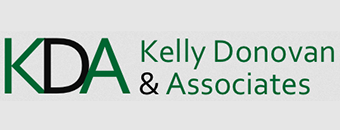Resumes are a little weird, whether we’re talking about an executive resume or a resume for an individual contributor.
You might wonder if the wording you see on professionally written resumes is grammatically correct. It’s correct (sort of).
Welcome to the world of “resume speak!”
“Resume speak” is the unique style that has become the standard for resume writing. Decision makers, executive recruiters, and HR executives usually expect and appreciate resumes written in this style.
With that being said, there is really no right or wrong in resume writing, and 10 different “experts” will give you 10 different opinions about a resume.
How resume speak is different from standard writing
1. Writing in “first person implied,” omitting personal pronouns.
Resumes should be written in first person, which means it’s written as though you’re writing about yourself. However, the standard, accepted practice is to leave out personal pronouns like “I,” “my,” and “me.” This style is referred to as “first person implied.”
Examples for present tense — for your current job:
– First person (normal writing): I develop marketing campaigns…
– First person implied (resume speak): Develop marketing campaigns…
Examples for past tense — for previous jobs:
– First person (normal writing): I launched a marketing campaign…
– First person implied (resume speak): Launched a marketing campaign…
What about third person?
Some people, when writing their resumes, use phrases like “develops marketing campaigns.” That means they’re essentially writing in third person implied, since third person with a pronoun would be “she develops marketing campaigns,” “he develops marketing campaigns,” etc.
Ultimately, it’s your resume and your choice. But the standard among professional resume writers (and my preference) is to use first person implied rather than third person implied. A reader is assuming that you wrote your resume yourself, so why would it be in any form of third person?
Are personal pronouns ever acceptable?
The occasional, thoughtful use of a personal pronoun or two on a resume can be perfectly fine — innovative, even. HR guru Liz Ryan advocates “human” language with personal pronouns in a resume, although this has yet to catch on.
In some cases, I’ve opted to use “my” or “I” on an executive resume if it allowed me to elegantly express a thought in one or two lines rather than writing a long, confusing, and nearly incomprehensible bullet.
While “first person implied” is a wonderful invention, you should not fear the occasional pronoun when there is a good reason for it. The Pronoun Police will not come to arrest you and shatter any chance you had of landing a new position.
2. Omitting articles
In resume speak, we usually don’t include as many articles as normal writing. Articles are “the,” “a,” and “an.”
It doesn’t hurt to include them, but resume statements can sometimes be more powerful when we limit unnecessary use of articles — and limiting them also conserves the limited real estate we have to work with on a typical two-page executive resume (or the even more limited space on a one-page professional resume).
Sometimes articles are necessary to ensure that the meaning of something is understandable, so I do include some articles–just not all the articles that I would include if I were writing a different type of document, like an essay for an English class.
Examples:
– Normal writing: I drove a 23% increase in EBITDA by…
– Resume speak with limited articles: Drove 23% increase in EBITDA by…
The resume speak example omits the “a” before the number, as it’s not necessary in resume speak. However, if you prefer a more natural-sounding style, it’s fine to include more articles than typical resume speak.
Additonal resources on resume speak:
http://www.dummies.com/how-to/content/five-tips-for-better-resume-writing.html
How does resume speak translate on LinkedIn? Is there LinkedIn speak?
Best practices for LinkedIn profiles have evolved to be different from best practices for resumes. Here are some points to consider when evaluating the use of resume speak on your LinkedIn profile.
- The “About” section works best when it’s in regular first person, not resume speak. I incorporate plenty of pronouns into an About section and write it in a conversational style.
- For the job descriptions in your experience section, the choice is up to you. You could stick with the resume speak approach, or throw in more articles to make it sound more natural. And yes, you could even use pronouns (gasp!) if you want, although I usually don’t.
Other style considerations: one space or two after a period?
I put only one space after a period on resumes and LinkedIn profiles, which has become the preferred practice in modern times — even though you probably learned to use two spaces back when you were in school.
One space is now the standard for many types of writing, and most style guides support this. Only the American Psychological Association’s style guide continues to recommend two spaces.
Some under-40 readers will perceive two spaces as an indication that you follow outdated practices, especially if you’re over 40.
In 2020, Microsoft announced that MS Word would begin flagging two spaces as an error–a clear harbinger that the extra space is on its way out.
This article first appeared on KellyDonovan.com
Executive resume writing and LinkedIn profile writing
Are you an executive, entrepreneur, or rising star who might benefit from one-on-one assistance? I invite you to learn more about my work as an executive resume writer and LinkedIn profile writer. If you’d like to chat, you can book a call for a free consultation via the Let’s Talk page.


